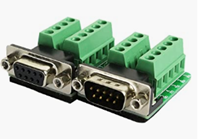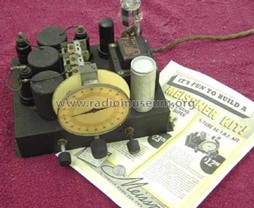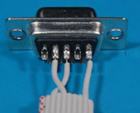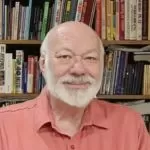Another Lost Art: Soldering

[April 2024] A lot of equipment is not modular. Ron Schacht still finds himself called in to work on older gear and devise solutions to keep stations on the air. Here is one that might help you one day.
In every field of work – whether it is broadcast engineering, plumbing, food preparation, banking, vehicular maintenance/repair, or what have you – every day, we are losing more and more experienced folks and their work methods, some of which have been in use for a long time.
Sometimes long used techniques are replaced by better methods – but many times by worse methods.
SOLDERING
What brings this up was an experience I had a few months ago that involved a technique rapidly disappearing in the broadcast engineering field: the art of soldering in electronics.
I was asked to help make a bunch of changes to a couple of radio stations in my area which involved a lot of wiring – and a lot of DB type connectors.
The people at the top of the ladder told me they had gotten all of the wire, connectors, etc. that I would need and shipped them to the facilities involved. So, the day came, I packed my favorite wire cutters, other assorted tools – along with my Weller TCP iron with its fine point tip – and, of course in admission of my age, several magnifiers and light sources.
I got to the first station, opened the box and there are these huge DB connectors, big plastic things with screw down strips to make the connections.

What is this??? No soldering!!! Frankly, I want to solder. I do not want to stick wires in holes, I do not trust this stuff.
Well, I dug around and found all of the DB connectors I could find that could be soldered and proceeded to use them, and only used the screw on ones when I ran out of the solder on ones. Much nicer job, much more compact and probably much more reliable in the long run.
MY INTRODUCTION TO SOLDERING
Besides crystal sets, and breadboard AM receivers, my first real experience with soldering came when I was about 10.
I was given a Meissner 5 tube AC/DC radio kit to build. Now, this was no Heathkit with detailed instructions. It was a box of parts, a schematic and some pictorials of what the bottom of the chassis should look like.

Well, armed with my dad’s trusty 100 Watt soldering gun, I started after I got all of the components mounted. I finished wiring it in two or three days and, anxious to hear it play, just plugged it in. Well after a little smoke and a blinding flash from the 35Z5 going super nova, I had my dad look it over.
FIRST LESSON
Now he was a commercial artist but knew some stuff about radio.
As he looked over the project and saw that parts were falling out, he told me the soldering was terrible. How could it be I thought, I had melted big blobs of lead on the tip of the gun then carefully transported them to the terminals of the tube sockets and deposited them there amongst the wires and component leads. All the terminals looked really nice with these dull gray blobs of lead that either fell off or moved back and forth when the wires were moved.
Well, between he and his brother (who, by the way, went to GI radio school after WW2) going over the entire radio, they found a couple of wires in the wrong spots. But neither of them would touch the soldering job. I messed it up and it was mine to fix.
HEAT THE WORK
Both of them watched carefully as they taught me the art of soldering: let the iron heat the work and let the work melt the solder!
Hmm, it seemed like a waste having to heat the tube socket pins so hot to melt the solder when I had, in my hand, a tool, the trusty Weller, that could melt the solder on the spot and drop it on the connection. Still, after they supervised me through the first 20 solder connections or so, they left me on my own – back to dropping blobs here and there.
Since they both found the wiring errors – and I fixed them – armed with a new 35Z5, I fired it up again.
SECOND TRY
This time, there was no smoke, the tubes light nicely, there was a little 60 Hz hum from the speaker, and then there, way down the end of the dial, very weak, almost inaudible, was the local station – which was, by the way, a 5 kW signal from about a mile away (which could be heard without a radio most days).
Tapping on the chassis made hums and squeals and the station go away, so I let Uncle Bob have a look at it. In no time at all, he spotted my reverting back to bad soldering as soon as he and dad stopped supervising. So it was back to the kitchen table with the Weller.
Heat the work, let the work melt the solder, heat the work, let the work melt the solder, over and over, not in my head but from Uncle Bob and dad who watched every connection.
Finished to their satisfaction, we plugged it in again. Now the local station was near the middle of the dial almost where it should have been and it was loud, not only that but we could hear more local stations on the dial. Wow. With Uncle Bob’s knowledge, a thorough alignment through the RF and IF stages, and it now picked up everything a “real” radio could get.
www.digitalalertsystems.com
A LESSON LEARNED
A few years later, when I got my Novice ham license, I built a 6L6 80-meter CW rig.
I used old parts from a GE floor model 1940 era radio, including the power transformer, the 5Z3 rectifier, and various other parts, and the soldering lessons “heat the work and let the work melt the solder” still ringing in my ear.
The rig worked great and went on to use a pair of 6L6’s when I advanced to phone – a Heising modulator using the old radio output transformer as the Heising choke.
A LIFELONG TALENT THREATENED
My ability to solder has carried me through 62 years of broadcast engineering.
Unfortunately, the art of soldering is going away and I feel that probably the IT people who do not know how to solder are responsible for these silly screw-on jobs. They can have them.

But as long as I am still up and taking nourishment, I will be soldering DB connectors, XLR connectors, ¼- inch phone and whatever else. When they finally drop me into the ground, I have given my wife instructions to put the Weller TCP iron and a roll of Kester in there with me.
God believes in solder!
– – –
Ron Schacht (K3FUT) has been a radio engineer for over 60 years, during which he has built some 100 stations, including a dozen with directional antennas. You can connect with Ron at screamingeagle@wctatel.net.
– – –
Would you like to know when more articles like this are published? It will take only 30 seconds to
click here and add your name to our secure one-time-a-week Newsletter list.
Your address is never given out to anyone.
